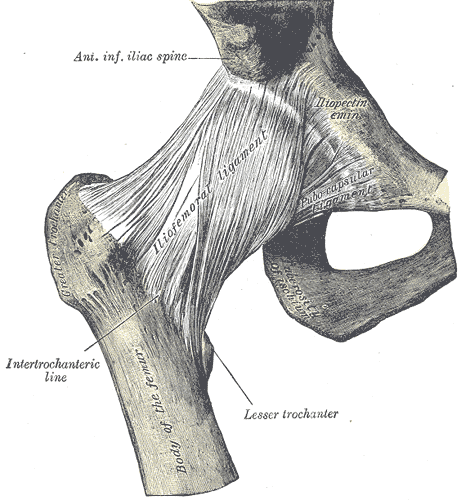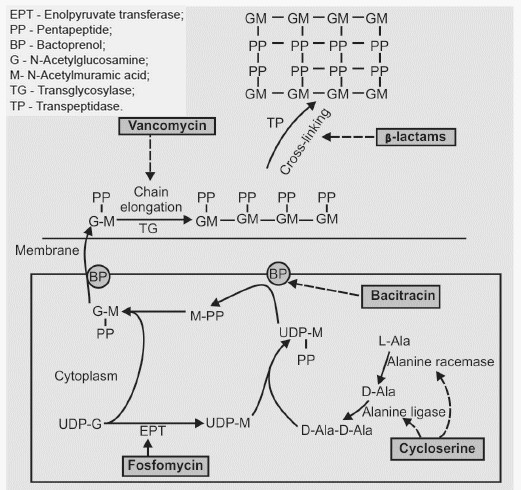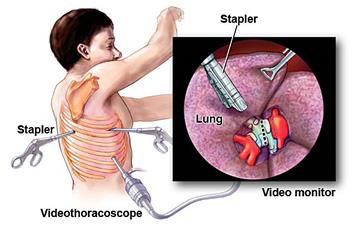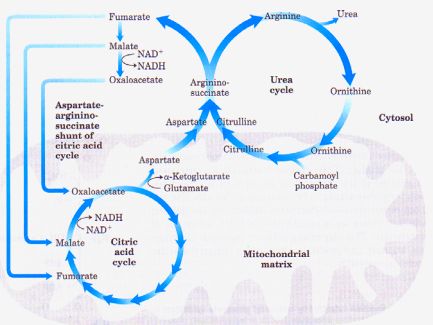Structure
- Inverted “Y” shaped
- Proximal attachment: Lower part of Anterior inferior iliac spine (AIIS) and rim of acetabulum
- Distal attachment: Divides into 2 bands which attaches to inferomedial (vertically oriented fibers) and superolateral (obliquely oriented fibers) part of inter-trochanteric line
- More than 0.5 cm thick
- Rupture strength: 350 kg
It is one of the strongest ligaments in the body, the other being the interosseous sacro-iliac ligament.
Functions
- Strengthens the anterior part of the articular capsule
- Prevents hyperextension of joint when standing
- In the erect posture, the center of gravity of the body falls slightly behind a line joining the centers of the two hip joints. As such, there is a natural tendency for the body to fall backwards on the hip joints. This is resisted by the iliofemoral ligaments.
Clinical correlates
- Hip dislocation: In hip dislocation, the surgeon may use the iliofemoral ligament as a support to lever the head of the femur back into the acetabulum.
- Hip dysplasia: Patients with hip dysplasia were found to have thinner iliofemoral ligaments
References:
- Anatomy, descriptive and applied – Henry Gray
- Cunningham’s manual of practical anatomy – 16th edition
- Iliofemoral Ligament | Complete Anatomy



